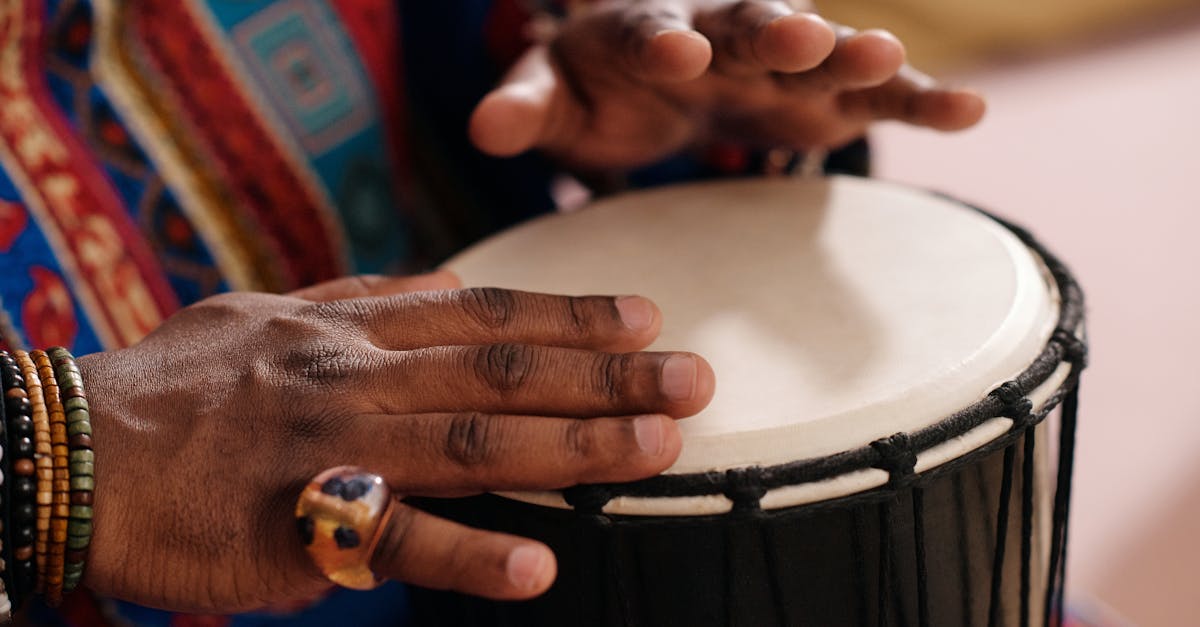Harmonic Globe Unraveling The Worlds Musical Tapestry
Introduction to the World's Musical Tapestry
Music, a universal language, connects communities globally through rhythm, melody, and song. Each culture boasts unique musical styles, reflecting their history, traditions, and emotions. From the rhythmic drumming of African tribes to the intricate melodies of Asian string instruments, each genre tells its own story. Despite these differences, music shares a common thread: a capacity to evoke powerful emotions. As globalization continues, musical exchanges and collaborations enrich these traditions. Exploring the globe's music leads to profound cultural appreciation and understanding.
Advertisement
African Rhythms: The Heartbeat of the Continent
Rhythm, central to African music, is used in ceremonial, storytelling, and communal contexts. Instruments like the djembe and talking drum resonate with age-old rhythms passed through generations. Polyphonic singing in regions like South Africa and poly-rhythmic beats from West Africa illustrate the continent's diversity. Music functions beyond entertainment, acting as a means of communication and social cohesion. Modern fusion genres like Afrobeat and Afropop showcase African music's global influence. Artists like Fela Kuti and Burna Boy exemplify this cultural exchange.
Advertisement
Asia’s Rich Soundscapes
Asia, expansive in geography and culture, presents a staggering array of musical traditions. Indian classical music, rich in ragas and talas, offers deeply spiritual experiences. On the other hand, Japanese Taiko drumming provides a powerful, kinetic performance. China’s traditional instruments like the pipa and guzheng produce uniquely evocative sounds. K-pop, a contemporary South Korean phenomenon, has captured worldwide attention, blending traditional and modern musical elements. Across Asia, music is intricately woven into the social and spiritual fabric of life.
Advertisement
Middle Eastern Melodies and Harmonies
Middle Eastern music, characterized by distinctive scales and quarter tones, provides a unique auditory experience. The maqam scales offer a foundation for improvisation, a key element in live performances. Instruments like the oud and kanun create melodies that convey complex emotions. Traditional music often reflects poetry and storytelling, preserving rich histories. Modern artists incorporate jazz, rock, or electronic elements, expanding the global appeal of these sounds. The region's music, while ancient, continuously adapts and resonates with contemporary audiences.
Advertisement
The Harmonious Fusion of European Traditions
Europe's musical heritage spans classical, folk, and modern genres, each reflecting distinct regional influences. Classical giants like Bach and Beethoven laid foundations for orchestral music, while traditional folk tunes echo historical customs. Flamenco from Spain, with its passionate guitars and spirited dances, contrasts with the serene, haunting melodies of Celtic songs. Contemporary genres, from British Rock to Scandinavian metal, highlight the continent's creative evolution. This intricate tapestry reveals a continent where innovation and tradition coexist harmoniously.
Advertisement
Latin American Beats Moving to Passionate Rhythms
Latin American music, with passionate rhythms and vibrant melodies, speaks to a spirit of joy and resistance. Genres like salsa, samba, and tango capture the diverse cultures of the region. The Spanish guitar’s emotive strums and the Afro-Cuban percussion’s driving beats form the backbone of countless tunes. Artists like Carlos Santana and Shakira have popularized these styles internationally. Through festivities and dancing, music remains central to community life, reflecting love, longing, and resilience. Latin music's vitality continues to inspire new generations globally.
Advertisement
North America's Ever-Evolving Sonic Landscape
North America’s music treads diverse paths, from Native American flutes to blues and jazz, pivotal in shaping the contemporary scene. The American music landscape thrives on cultural amalgamation, evident in jazz's improvisational spirit and blues' soulful expression. Pop and hip-hop genres have become cultural cornerstones, influencing global music trends. Iconic figures like Elvis Presley, Louis Armstrong, and Beyoncé have played crucial roles in shaping this vibrant tapestry. The nation remains a melting pot, where tradition and innovation intertwine to redefine sound.
Advertisement
Musical Interconnectedness Embracing Global Collaboration
Newer genres like World Music attest to ongoing musical collaboration, embracing a borderless artistic exchange. Technology enables cross-cultural projects, fostering innovative music fusions. Collaborative platforms unite diverse musical talents, merging traditional elements with contemporary styles. Events like WOMAD (World of Music, Arts, and Dance) celebrate this global interchange, encouraging both exposure and participation. These collaborations promote cross-cultural understanding, with each syncopation and harmony creating a dynamic musical dialogue.
Advertisement
Challenges and Opportunities in Preserving Diverse Music Cultures
As music becomes more interconnected globally, maintaining the authenticity of traditional music poses challenges. Preservation efforts focus on documenting and archiving indigenous sounds so they aren't lost to time. Organizations and artists aim to revitalize forgotten traditions, while respectfully integrating them into contemporary music. The digital era is pivotal in reaching global audiences, providing opportunities to educate and celebrate these distinct sounds. Humanity is tasked with protecting musical heritage, navigating the delicate balance of preservation and innovation.
Advertisement
Conclusion: A Unified Melody Celebrating Musical Diversity
Music, diverse yet cohesive, connects humanity through shared artistic expression. Globally influenced music genres highlight our common desire to create, inspire, and connect. The harmonious blend of traditional and modern sounds cultivates cross-cultural appreciation and innovation. As global citizens, embracing this tapestry’s diversity enriches our musical journeys. From African rhythms to Asian harmonies, each note contributes to a unified global melody.
Advertisement







